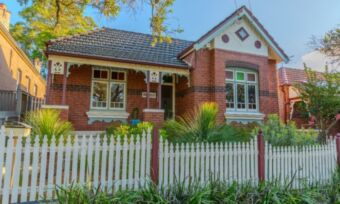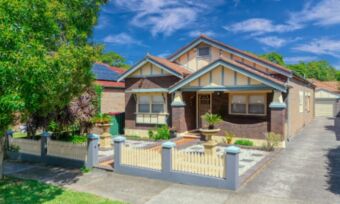Building vs buying a house: pros and cons
If you’re looking to buy your first home, upsize your current home or relocate, you may be wondering, is it cheaper to buy or build a house?

If you’re looking to buy your first home, upsize your current home or relocate, you may be wondering, is it cheaper to buy or build a house?
Is building a house or buying one more difficult? We consider the pros and cons of building a house vs buying one, and some key things to keep in mind. With uncertainty in the market, your decision will ultimately come down to your own situation and needs.
Australia’s house prices continue to boom despite high interest rates. Housing is now more expensive than ever in Australia’s major cities. Simultaneously, there is some unrest in the construction market, with many home-building companies going under, and concerns that others could follow.
Here’s some pros and cons to both building and buying a house to help you with this important decision.
What are the pros and cons of buying a house?
Some potential pros of buying a house include:
- in most cases you know in advance what you’ll be getting
- the buying process will typically be faster than building
- you may be more likely to find an existing home in a more favourable location than a vacant block of land in an equivalent suburb.
Potential cons include:
- problems with older homes (wear, tear and design)
- the possible need to renovate (and the expense that can come along with this)
- government fees that can be higher than building a home.
Pro: You know what you’re getting with an existing house
When you purchase an existing home, generally you will be able to inspect the property yourself. Not only this, but you will be able to get an idea of the condition of the house, as well as any potential structural flaws or maintenance issues, or even signs of current or former pest infestation, with a building and pest report.
When purchasing a house, it’s possible to make the sale conditional on the result of a building and pest inspection; meaning that if any major issues are uncovered, you will be able to back out of the purchase. It’s worth noting, however, that when you buy at auction, the sale is final, so in this instance you would need to do any pre-purchase research beforehand.
Pro: Buying a house may be faster
Generally speaking, it’s faster to buy and move into an established house than building one from scratch. The time period between signing the contract on a house and moving in can be as little as 30 days, depending on the settlement period you opt for. This means, in theory, you could view a property, decide to buy it and have the keys within the space of a month.
In contrast, the process of building a house can generally be expected to take a lot longer. According to Australian property marketplace Domain, it takes between six months to a year to build a house in Australia (potentially longer for more complex builds). This can vary based on factors like the size and design of the home, approvals and permits, the readiness of the site to start construction and the weather.
Pro: Finding an established home in a more favourable location
If living in an inner city suburb is a priority for you, then it’s worth keeping in mind that the closer you get to the CBD, the harder it might be to find vacant land. Therefore, if you wish to live in a location like this and have access to the amenities and cultural life that a city offers then buying an established house may be preferable.
If you wish to build a home closer to town, you could consider a knock down-rebuild, which would involve purchasing an existing home in order to demolish it and rebuild from scratch. Generally it may be easier to find vacant land in outer suburbs, which may be a more practical option if you wish to build rather than buy. New housing developments with vacant blocks may well be planned to include amenities such as public transport, medical centres, schools and shops.
Con: Problems with older homes (wear, tear and design)
Buying an established house may be appealing if you feel the home was ‘built to last’, with better craftsmanship and more sturdy materials. On the flipside of this, older houses can come with ‘old house problems’. The longer the house has been around, the more of these problems you may potentially face; leading to more work for you when you live there.
What exactly are some of these problems? They can range from maintenance issues and things that need replacing, such as older hot water or air conditioning systems, through to issues such as antiquated layouts and features in need of modernising. Even issues with the roof or foundations of the house may necessitate repair over time.
Con: Potential need to renovate
Even if an established house is structurally sound, you may buy it with a view to renovate, and this could mean knocking down walls or installing a new kitchen and/or bathroom. While all these things can be done prior to moving in, renovations take time and money, so you may decide to move into your new home and renovate it piece by piece.
While this is certainly achievable, you will need to bear in mind that living amongst renovations can be inconvenient. You may even need to move out for a few weeks if you are without a kitchen or bathroom. Building a new house with everything as you want it before you move in may be appealing, but it can also take several months or more, so it’s important to factor this into your decision-making process too.
Con: More to pay in government fees
When buying a house, you may find that you need to pay stamp duty. Stamp duty, also known as transfer duty, is a tax that is charged by each Australian state and territory for the purchase of a property. It can significantly add to the overall cost of a home. As an example of how much stamp duty might cost, we used Canstar’s Stamp Duty Calculator to consider the example of a New South Wales property buyer (not a first home buyer) purchasing a house as a primary residence for $800,000. The stamp duty and other government fees applicable on the purchase in this example would be $30,872.40.
When buying a vacant block of land to build on rather than buying an existing house, the cost of stamp duty could potentially be less, as we’ll explore in more detail below.
Compare Home Loans (Refinance with variable rate only) with Canstar
If you’re currently considering a home loan, the comparison table below displays some of the variable rate home loans on our database with links to lenders’ websites that are available for homeowners looking to refinance. This table is sorted by Star Rating (highest to lowest), followed by comparison rate (lowest to highest). Products shown are principal and interest home loans available for a loan amount of $500,000 in NSW with an LVR of 80% of the property value. Consider the Target Market Determination (TMD) before making a purchase decision. Contact the product issuer directly for a copy of the TMD. Use Canstar’s home loans comparison selector to view a wider range of home loan products. Canstar may earn a fee for referrals.
The comparison rate for all home loans and loans secured against real property are based on secured credit of $150,000 and a term of 25 years.
^WARNING: This comparison rate is true only for the examples given and may not include all fees and charges. Different terms, fees or other loan amounts might result in a different comparison rate.
 Owner occupied
Owner occupied
 20% min deposit
20% min deposit
 Redraw facility
Redraw facility
 Owner occupied
Owner occupied
 20% min deposit
20% min deposit
 Redraw facility
Redraw facility
 Owner occupied
Owner occupied
 20% min deposit
20% min deposit
 Redraw facility
Redraw facility
 Owner occupied
Owner occupied
 20% min deposit
20% min deposit
 Redraw facility
Redraw facility
 Owner occupied
Owner occupied
 20% min deposit
20% min deposit
 Redraw facility
Redraw facility
Canstar is an information provider and in giving you product information Canstar is not making any suggestion or recommendation about a particular product. If you decide to apply for a home loan, you will deal directly with a financial institution, not with Canstar. Rates and product information should be confirmed with the relevant financial institution. Home Loans in the table include only products that are available for somebody borrowing 80% of the total loan amount. For product information, read our detailed disclosure, important notes and additional information. *Read the comparison rate warning. The results do not include all providers and may not compare all the features available to you.
Home Loan products displayed above that are not “Sponsored or Promoted” are sorted as referenced in the introductory text followed by Star Rating, then lowest Comparison Rate, then alphabetically by company. Canstar may receive a fee for referral of leads from these products.
When you click on the button marked “Enquire” (or similar) Canstar will direct your enquiry to a third party mortgage broker. If you decide to find out more or apply for a home loan, you can provide your details to the broker. You will liaise directly with the broker and not with Canstar. When you click on a button marked “More details” (or similar), Canstar will direct your enquiry to the product provider. Canstar may earn a fee for referral of leads from the comparison table above. See How We Get Paid for further information.
What are the pros and cons of building a house?
There are a number of potential pros to building your own house, including:
- Your own design specifications.
- Possible savings from access to grants and stamp duty concessions.
- The option to build an energy-efficient property.
There are a number of potential cons also, including:
- Uncertainty in the construction industry.
- The potential for cost blowouts and other hidden costs.
- The risk of poor construction and workmanship.
- The constraints that can come with construction loans.
Pro: A house designed to your specifications
One of the main pros of building a house is the satisfaction that comes with getting a home that is truly yours. Whether you’re buying a new house off the plan or constructing your dream home, you know that when you get the keys, you’ll be moving into a house that nobody has lived in before.
Pro: Possible access to grants and stamp duty concessions
The First Home Owners Grant (FHOG) program is available to Australians across almost all states and territories, with the exception of the ACT, where stamp duty concessions are offered instead. While the rules can differ, one common thread is that it’s generally only available to people who are buying or building a brand-new home. This means that, depending on where you live, if the home you are building is your first, you could have access to anywhere from $10,000 to $30,000 in grants, as long as you meet the eligibility criteria in your state or territory.
Another potential advantage of building a house is that if you purchase a vacant block of land with the intention of building a home on it, then you may only be required to pay stamp duty on the land, and not the house. Rules about stamp duty differ depending on the state or territory you are in:
- The ACT
- New South Wales
- The Northern Territory
- Queensland
- South Australia
- Tasmania
- Victoria
- Western Australia
Pro: Option to build an energy-efficient home
One potential benefit of building a home for yourself is that you may have the option to use energy-efficient building materials and techniques, which can help save on power bills. If you’re contemplating a new build, Canstar Blue has a list of ways you can make your home more energy-efficient; with tips on everything from insulation and airflow through to energy-efficient appliances.
While some energy-efficient options could be expensive up front, particularly solar power systems, they could help you save on energy bills in the long term. There are a variety of rebates available for installing solar panels around Australia. If you’re eligible for one of these, it could potentially save you money.
Con: Uncertainty in the construction industry
If you’re thinking about building a house, you may be concerned about recent reports of construction companies going bust and leaving clients out of pocket and without a finished home. According to the latest data from the Australian Securities & Investments Commission (ASIC), the construction industry accounted for 27.7% of all companies entering external administration. This is up 75% for the industry in the last 12 months, with over 2,300 companies collapsing.
It seems that many construction companies are feeling the squeeze right now, thanks to factors like high interest rates, increasing material costs and labour market shortages. These factors have made it more difficult for companies to deliver on fixed-price contracts, at a time when builders may have already been struggling to overcome the aftereffects of the pandemic.
Con: Potential for cost blowouts
When building a home for yourself, whether you’re buying off the plan or building a home you’ve designed with an architect, you can find that you could end up spending more than you bargained for. Costs have the potential to blow out thanks to things like materials shortages and labour costs. You may even find that adverse weather conditions can delay the build, which in turn drives up the cost.
Price increases for customers who have signed fixed-price building contracts are becoming a common problem in Australia. Issues like supply chain problems, materials shortages and increased costs for building materials like steel and timber could see your costs potentially balloon. It’s important to seek legal advice and read the contract carefully before agreeing to or paying an increase in the contract price on a fixed price contract.
Likewise, when you buy a home off the plan, you should be careful to ask questions about what inclusions come as standard, and which come as extras. For example, you may buy a house off the plan, only to find out that certain fittings and features don’t come as standard, and that you’ll need to pay extra to get the ones you love.
When it comes to building a new home, it’s also important to check your contract carefully and find out exactly what is and isn’t included. For example, you may discover that a certain thing you thought might be standard – a driveway, for example – is not included, and will cost extra. If these things start to add up, the cost of a new build could end up being more than you bargained for.
Con: Risk of poor construction work
When building a house, you will need to trust that your builders will do a good and thorough job. This includes constructing the house to a standard that is satisfactory, with no major issues.
Generally speaking, when building a home, you will pay for the construction in stages, and your builder will collect the final payment once the project is complete. Before completion, you will need to conduct a pre-handover inspection to have any defects remedied before the keys are handed over and the house becomes yours.
Major issues with a new build can potentially cause headaches. If a major issue arises and you cannot reach an agreement with your builder as to having it repaired, you may need to take the matter to your state’s relevant consumer affairs body or even to court to try and have the matter resolved.
Some within the industry also feel that newer builds are simply not as solid or as skillfully constructed as older dwellings. This view is of course subjective, and the quality of a build will depend on the skill and experience of your builder and the materials available. If you’re thinking of building a new home, it may be worth asking friends who have built or purchased a newer property about any issues they have had with their builds, to get a sense of what you might be in for.
Con: Construction loans can come with time constraints
If you take out a construction loan, then it’s important to understand exactly what you are signing up for. Some of these loans can come with constraints, particularly related to when you start the build.
It may be the case that your lender places restrictions on the time that you have to finish a construction project after taking out a loan. These can range from six to 24 months depending on the lender and the size of the project. Some lenders may also require you to start construction within a certain time period after settling on the land purchase.
While these things can all be discussed with your lender and your builder ahead of time, it’s still important to understand that the time frames associated with construction loans can be limiting.
Is it cheaper to buy or build a house?
After contemplating the pros and cons of buying vs building a house, you may be wondering about the costs associated with each. Both will be influenced by a number of factors. According to the most recent data available from the Australian Bureau of Statistics, the average cost to buy a dwelling in Australia is currently $959,300. The average cost to build a three to four bedroom house, however, can range from $1,300 to over $3,900 per square metre according to online tradie platform, Hipages.
How much does it cost to buy a house?
The cost of buying a house will be dependent on a number of factors, including the size and location of the property, and a number of associated costs; ranging from conveyancing through to government duties like stamp duty.
That being said, recent CoreLogic figures indicate that the median price of a dwelling in a capital city in Australia is $878,414 as of June 2024. Broken down by capital cities, the median dwelling price is as follows:
- Adelaide: $767,974
- Brisbane: $859,240
- Canberra: $870,071
- Darwin: $504,687
- Hobart: $645,850
- Melbourne: $783,205
- Perth: $757,399
- Sydney: $1,170,152
How much does it cost to build a house?
The cost of building a house in Australia in 2024 can be anywhere between $620 to $4,000 per square metre, states Hipages. This costing is based on national averages, but it’s important to bear in mind that the price of building a house will depend on a number of factors, including the size of the property, the materials, the fittings and finishes, workmanship costs and even the location; which can affect the price of materials and labour. You will also need to keep in mind the cost of the land you plan to build on, or the cost of knocking down an existing dwelling if you plan to do so.
Cover image source: Robert Kneschke/Shutterstock.com
This article was reviewed by our Content Lead Mandy Beaumont before it was updated, as part of our fact-checking process.

Alasdair Duncan is Canstar's Deputy Finance Editor, specialising in home loans, property and lifestyle topics. He has written more than 500 articles for Canstar and his work is widely referenced by other publishers and media outlets, including Yahoo Finance, The New Daily, The Motley Fool and Sky News. He has featured as a guest author for property website homely.com.au.
In his more than 15 years working in the media, Alasdair has written for a broad range of publications. Before joining Canstar, he was a News Editor at Pedestrian.TV, part of Australia’s leading youth media group. His work has also appeared on ABC News, Junkee, Rolling Stone, Kotaku, the Sydney Star Observer and The Brag. He has a Bachelor of Laws (Honours) and a Bachelor of Arts with a major in Journalism from the University of Queensland.
When he is not writing about finance for Canstar, Alasdair can probably be found at the beach with his two dogs or listening to podcasts about pop music. You can follow Alasdair on LinkedIn.
The comparison rate for all home loans and loans secured against real property are based on secured credit of $150,000 and a term of 25 years.
^WARNING: This comparison rate is true only for the examples given and may not include all fees and charges. Different terms, fees or other loan amounts might result in a different comparison rate.
 Owner occupied
Owner occupied
 30% min deposit
30% min deposit
 Redraw facility
Redraw facility
Try our Home Loans comparison tool to instantly compare Canstar expert rated options.





